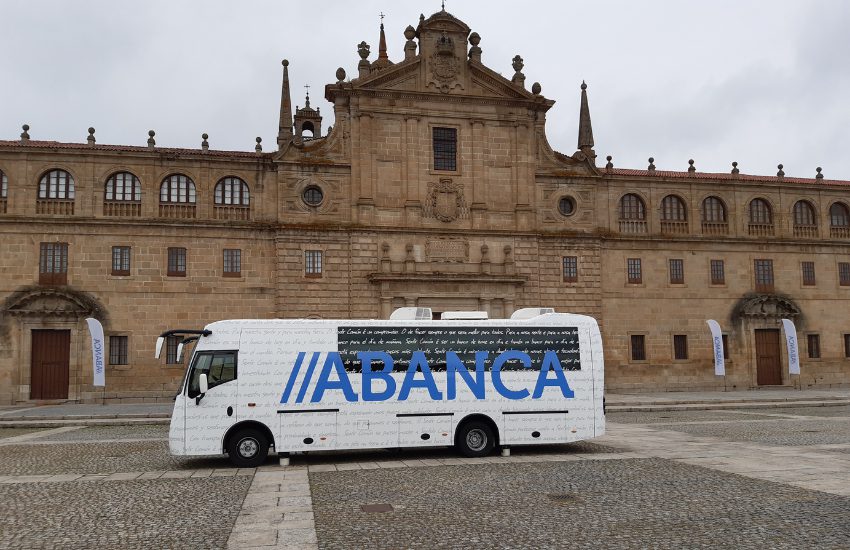The commitment of banks to rural areas is stronger than ever
In 2010 there were 43,267 bank branches in Spain. By 2021 this number has fallen by 52% to 20,904 branches, according to data from Statista. A picture that is obviously different in rural and urban Spain. In this regard, the population in our country has increased by 17.3% in the last two decades, while some towns have lost 20% of their inhabitants. The closing of schools or the absence of medical centres is a common occurrence in these regions, where the bank branch is often the last establishment left standing.
Depopulation is therefore a particularly intense demographic phenomenon in Spain, which is leading to fewer and fewer customers for services, and this includes banking services. However, banks have not abandoned these areas and have continued to provide service, staying true to their commitment to the territories, offering these services differently. In this regard, CECA entities (CaixaBank, Kutxabank and Cajasur Banco, Abanca, Unicaja Banco, Ibercaja Banco, Caixa Ontinyent, Colonya Pollença and Cecabank) have long-standing initiatives to ensure access to basic services, such as withdrawing cash, paying bills by direct debit or making a deposit. Mobile branches are an example of this ongoing commitment to service, but not the only one.
The reduction in the number of bank branches is part of a major transformation underway in the banking sector, in line with what is happening in other industries. However, despite this dynamic, Spain maintains its position as the country with the second highest number of branches per inhabitant in the Eurozone (only behind France), with almost 5 branches per 10,000 inhabitants (as of December 2020), compared to an average of 2.6 in neighbouring countries.
This phenomenon is compounded by the increasing use of digital channels in recent years, a trend that has accelerated in 2020 as a result of restrictions on mobility. Between 2009 and 2020, Spain is the Eurozone country with the highest increase in the "online banking usage" index (+40 percentage points). This index, compiled by Eurostat, measures the percentage of individuals between the ages of 16 and 74 who, in the three months prior to the survey, have carried out an electronic transaction with a bank or made an online enquiry on their bank account.
In short, although there has been a significant reduction in installed capacity in Spain in recent years, CECA sector entities have kept the retail and proximity banking business model alive, as evidenced by the still high number of branches per inhabitant (second only to France) and the growing use of digital channels, enabling them to reach wider sections of the population.
The importance of financial inclusion
Promoting financial inclusion in societies supports economic growth and development. This is reflected in studies such as the World Bank's "Financial Inclusion and Inclusive Growth: A Review of Recent Empirical Evidence". According to the document, the provision of financial services in these areas can encourage household savings, combat poverty and inequality, and drive the development of new business projects.##44441## ##44441##
Despite the sharp reduction in the number of branches, a high degree of accessibility to banking services is maintained at the municipal level. Thus, with data from 2020, only 3% of the entire population does not have access to a bank branch in their municipality, although this situation mainly affects rural towns or municipalities with less than 500 inhabitants (3,630 towns without a branch with a population of 600,000 inhabitants).
Precisely in order to encourage this inclusion, CECA's member entities offer customers various alternatives that enable them to access financial services in non-urban areas. One of these measures is the ofibus. These mobile branches guarantee service to the rural network and foster proximity to the customer and financial inclusion. These mobile branches can be used to withdraw cash, make deposits or pay taxes. CECA entities have a network of 23 ofibuses, serving almost half a million people and covering the equivalent of 4.4 times the perimeter of the earth's surface each year.
23 ofibuses – 598 municipalities looked after – 493,380 clients looked after – 175,234 km
Another alternative that promotes financial inclusion is cash-back, a system that allows an individual to pay with a card more than the amount of their purchase in order to receive the difference in the form of cash. This system is carried out in collaboration with all types of businesses, such as shops and restaurants, and responds to one of the main challenges in terms of financial inclusion facing the emptied Spain: access to cash.
On the other hand, banks have reinforced their network of financial agents to serve customers on a regular basis in those Spanish municipalities that do not have a bank branch. The aim is to protect customers living in the most depopulated areas from the threat of financial exclusion and to continue to provide personalised attention and advice.
Promoting digital inclusion
The technological revolution that society is experiencing at all levels means that the digital divide that already existed is widening. Moreover, the difference between rural and urban Spain has become more evident in the wake of the pandemic. According to the report How the Emptied Spain fills its time on the Internet, prepared by Eurona in collaboration with the consultancy firm Kantar, almost a quarter (21.7%) of the residents of municipalities with less than 5,000 inhabitants were not yet connected to the Internet when the pandemic hit. Thus, electronic consumption in 2020 was 10 percentage points lower in rural areas than in the city.
As CECA points out, "this is more of a national challenge than a sector-specific issue, which needs to be addressed by public policies with the collaboration of the private sector, whenever possible. In this regard, the arrival of European funds could be an excellent opportunity for our country to move towards a more inclusive digital society". In fact, the banking sector is placing special emphasis on financial education, as evidenced by the fact that CECA's member entities allocate more than €4 million a year to the promotion of financial education and 30% of this investment is earmarked for digitally vulnerable groups.
In short, the trend towards fewer branches should not be seen as a reduction in access to financial services, insofar as the banking sector maintains a high degree of public access to physical branches, which is complemented by the increasingly greater use of the new digital channels.













